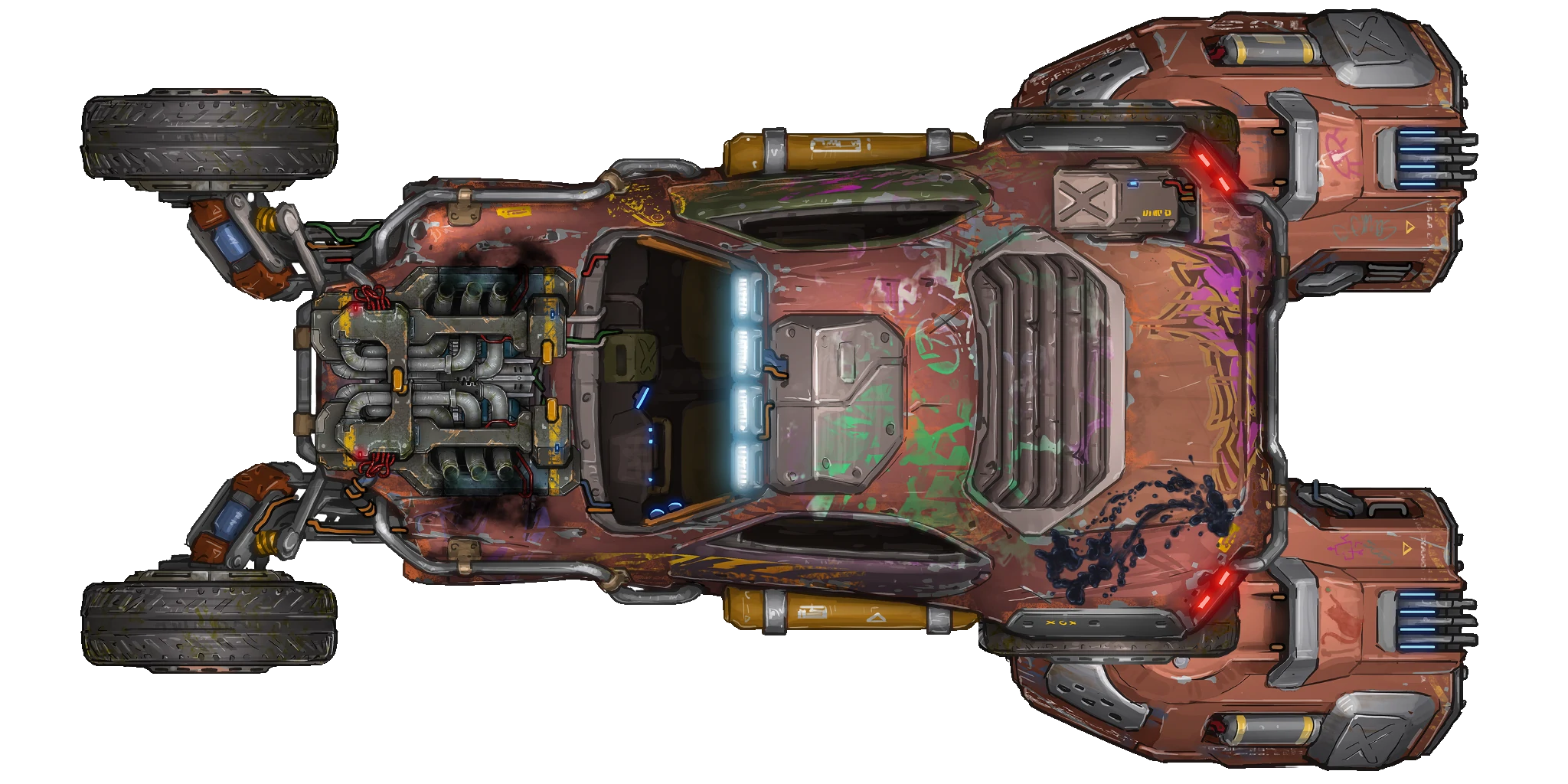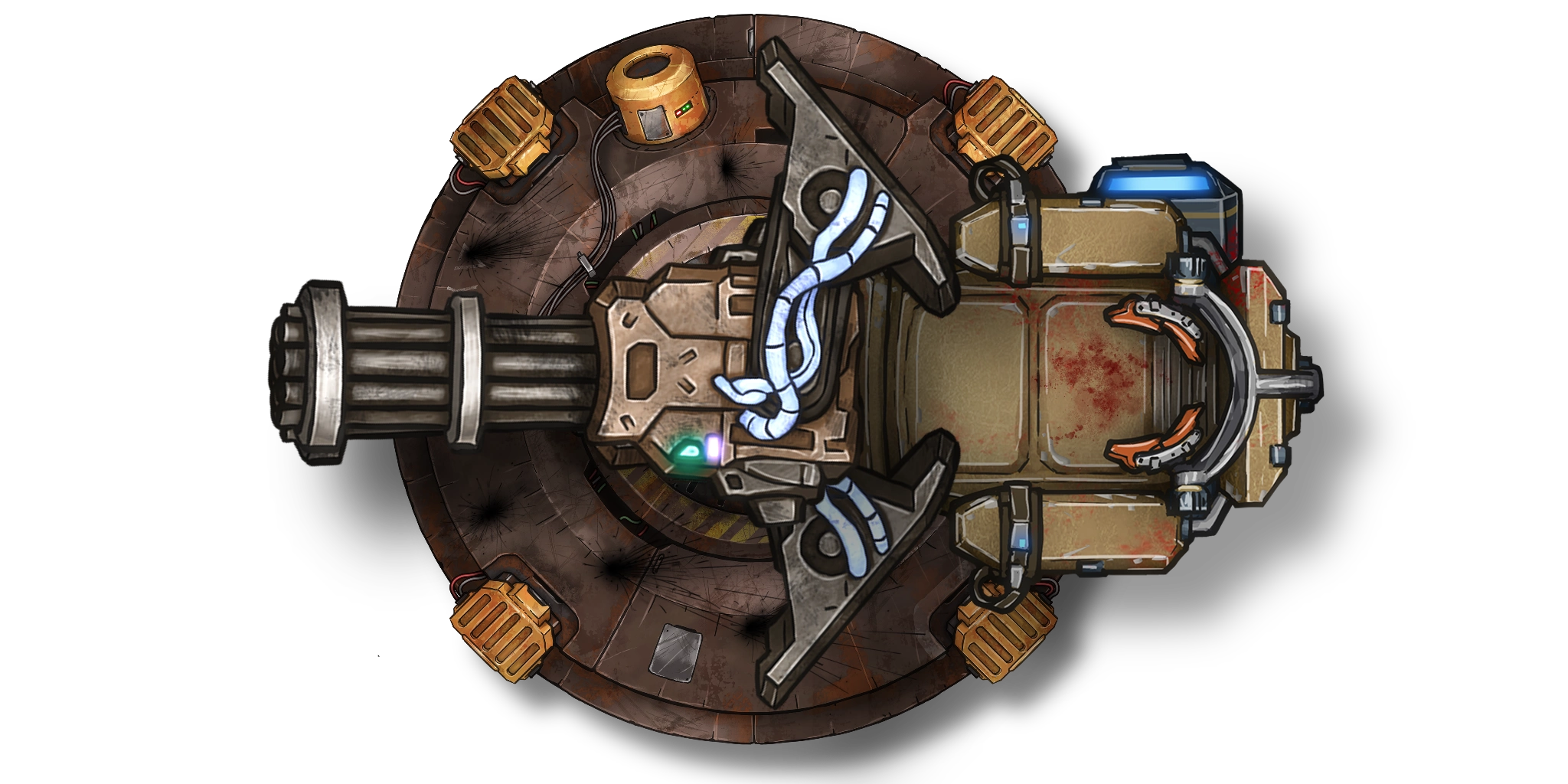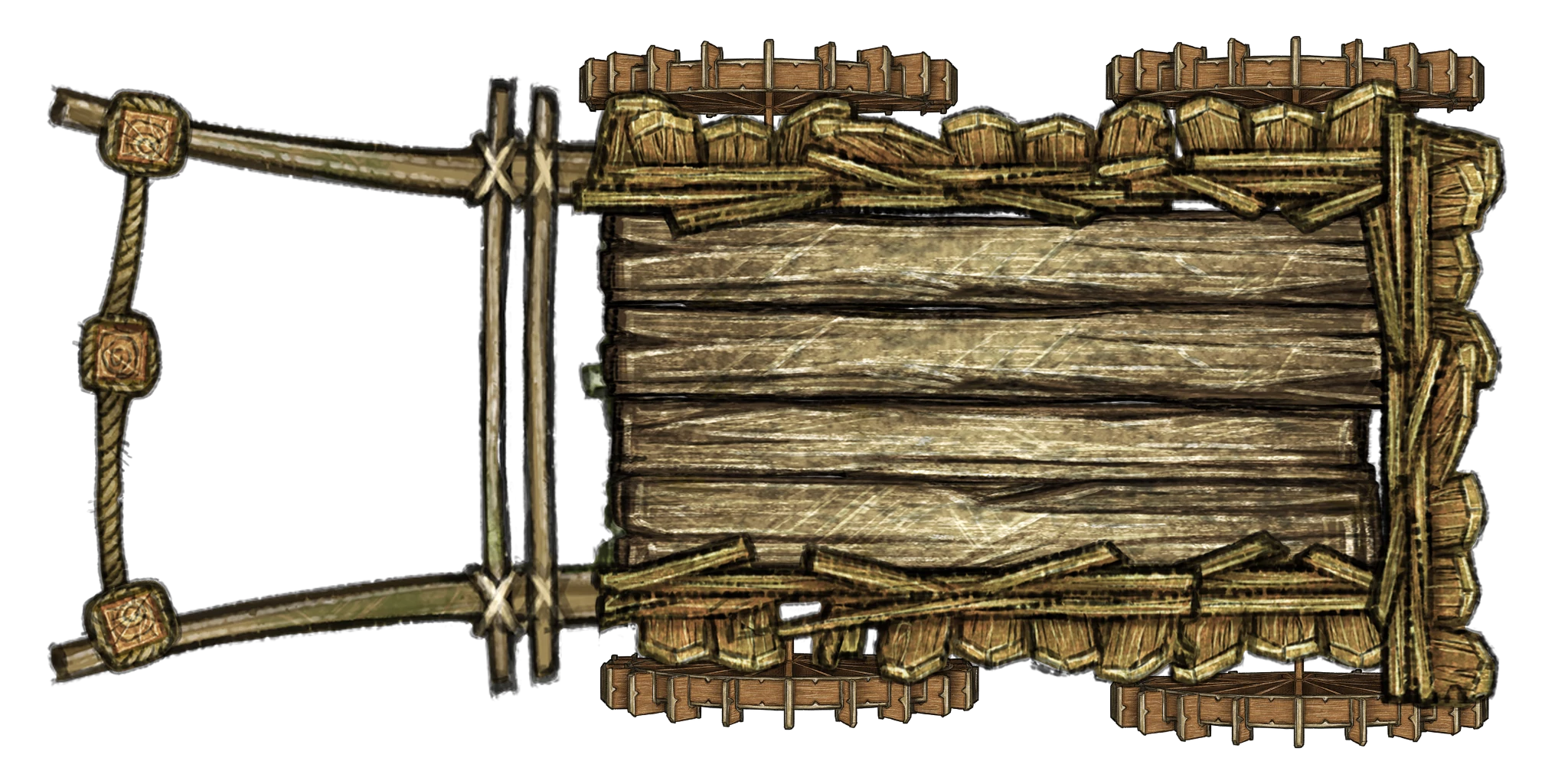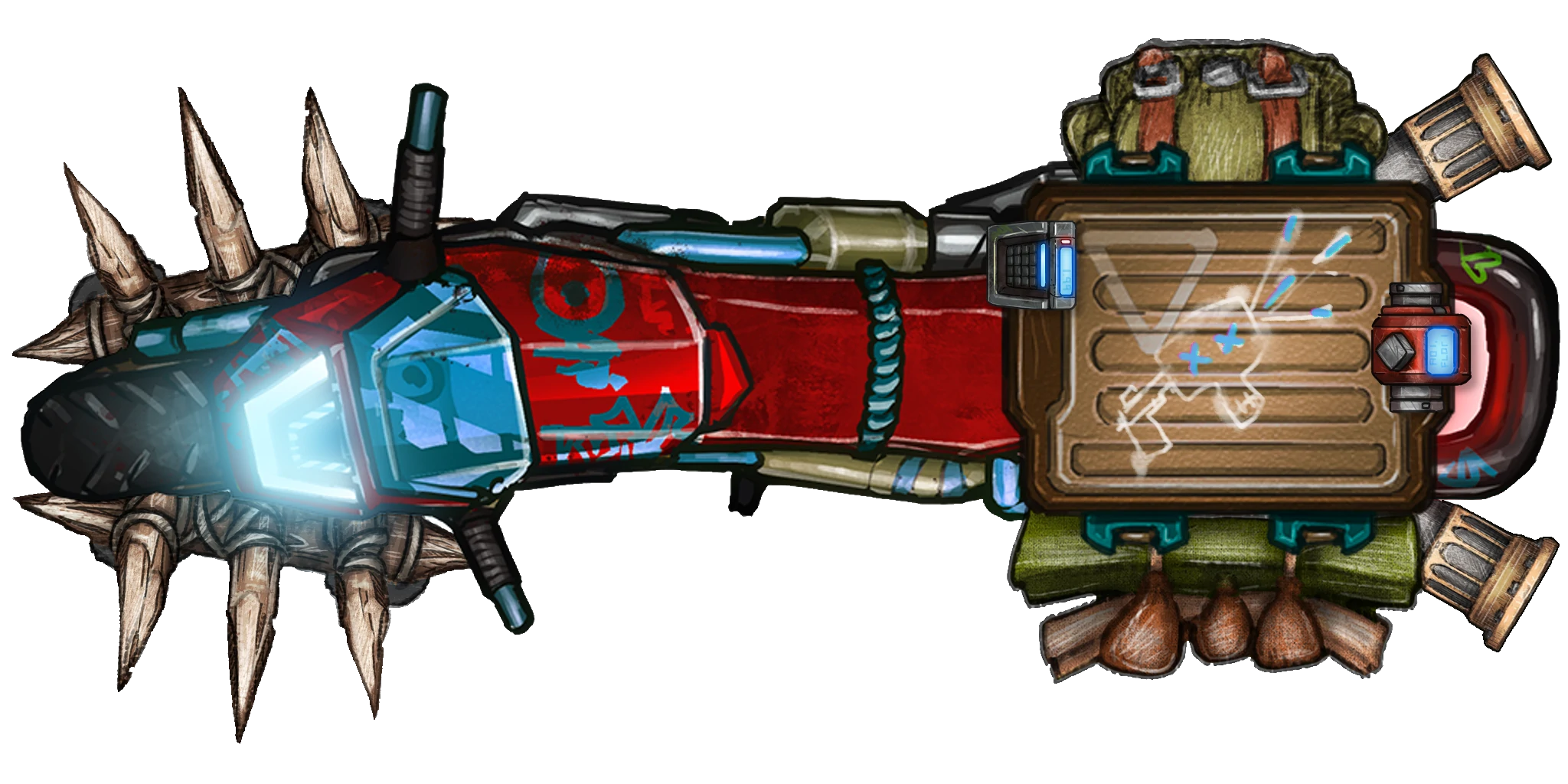Warning: Pre-Alpha
This game is currently in pre-alpha, and at this time, I do not recommend running a game in it yet. Every single game mechanic and piece of lore is subject to potentially breaking changes.
Thank you for your interest in this game! You can follow its development at https://www.youtube.com/@trekiros
-Trek
Vehicles
Though most of the roads are covered in debris and broken asphalt, some particularly talented techies have managed to keep some engines running. Blazing through the wasteland faster than danger can catch up to them, they haul people and cargo from place to place. But for every good-natured driver out there, there are a hundred raiders out there who'd love nothing more than to get their hands on what you're transporting.
Vehicle rules:
Vehicles List:
Pilot. A creature on a vehicle can take the use an object action to become the vehicle's pilot until it leaves the vehicle, or loses focus. Only one creature can pilot a vehicle at a time.
Vehicle movement. In combat, each vehicle can move once per round.
- The pilot, if there is one, can take the use an object action to move the vehicle any distance up to its speed (minimum 0).
- On initiative count 0, the vehicle moves the same distance and in the same direction as it did the last time a pilot caused it to move.
Crashes. Vehicles can crash into obstacles, typically during their movement, or when a Called Shot is used against them.
If the obstacle is a creature or a piloted vehicle, that creature or pilot can make a Speed or Technique roll to avoid the crash. If the vehicle that is crashing into that obstacle has a pilot, this is a contested roll against this pilot - otherwise, it is an Easy (DC 8) roll. If the obstacle succeeds, the crash doesn't happen, and can't happen again this turn.
If the crash does happen, the obstacle takes 4d6! damage from being rammed into. If it is a vehicle, any creature on it also takes the damage.
If the obstacle is at least half the crashing vehicle's size, then the crashing vehicle, as well as any creature currently on it, also takes 4d6! damage from the collision.
Any creature or object which loses at least 1 hit point because of a crash is pushed 5m in a random direction chosen by the Plot Twister.
Crash examples
Example 1: A player character piloting a buggy runs over a raider. The player must make a Speed or Technique roll contested by the Raider's Speed (DC 8), to deal 4d6 ramming damage to the raider. They don't suffer collision damage. If the raider loses at least 1 hit point, they are pushed 5 meters in a random direction.
Example 2: A sniper uses a called shot to make a motorbike crash into the ground. The motorbike and its rider both take 4d6 collision damage. If the motorbike and/or the raider lose at least 1 hit point, they are pushed 5 meters in a random direction.
Planet Earth takes 4d6 ramming damage, which can simply be narrated as a puff of smoke being swept up from the ground. Earth does not lose a hit point from this and is not pushed 5 meters.
Example 3: A raider in a buggy rams into the party's holo-train. The player piloting the holo-train can make a Speed or Technique roll contested by the Raider's Speed (DC 8) to avoid the crash.
The two vehicles are of a comparable size, so if the holo-train's pilot fails this contested roll, then the two vehicles and everyone on either of them all take 4d6 damage. Any creature or vehicle which loses at least 1 hit point from this is pushed 5 meters in a random direction.
Vehicle types. There are two types of vehicles:
- Individual vehicles can only carry one or two riders, and are typically only used for short distances.
- Group Vehicles are large enough that they can sometimes accommodate the entire party, and their individual vehicles. They are often necessary for journeys that last multiple days.
Most group vehicles are too slow and bulky for vehicle combat: when a fight breaks out in the wasteland, it is recommended for combatants to hop on their individual vehicles, or mounts.
Capacity: Each vehicle has a capacity. For individual vehicles, the capacity shows how many humans can ride it at once. For group vehicles, this capacity also shows how many mounts, or individual vehicles can be carried aboard.
For example, a group vehicle with a capacity of 15 could carry 8 people plus 3 mounts and 4 motorbikes.
Stations. Vehicles can be customized in various ways, by adding stations which can be weapons, sensors, habitats for their crew, etc... Each vehicle has a grid highlighting where stations can be placed.
As part of a long rest, you can add stations to a vehicle, remove them, move them to a different location on the same vehicle, swap an existing station with a different one, etc...
Repairing a vehicle. Vehicles have hit points and a damage threshold just as player characters do. As part of a long rest, you can repair a vehicle to make it regain lost hit points. For each hit point regained in this way, you must spend a quantity of 🛠 scrap equal to the vehicle's damage threshold.
If a vehicle belonging to the player characters is reduced to 0 hit, it can still be repaired. If it belongs to an enemy NPC, the vehicle is destroyed instead, and can only be scrapped for parts.
Travel Pace. The wasteland's damaged terrain cannot be traversed very quickly or reliably. No matter what the top speed of a vehicle is, here is how far vehicles can travel for a given length of time:
- 1 hour: 20km (10 miles)
- An entire night (~10 hours): 200km (100 miles)
- 24 hours without stopping: 400km (200 miles)
On Running Vehicle Combat
The Plot Twister should consider the following advice to design fun vehicle combat encounters:
- Reduce the distance between the players & their enemies as much as possible before getting into combat.
- Put the players on different vehicles (or mounts), so they stay in control of their own movement, and melee-based characters get a chance to shine.
- Put interesting obstacles in the terrain, such as ramps to do cool tricks off of, debris to use as cover, destructible things which can create obstacles for pursuers, or a sandstorm which obstructs visibility.
These vehicles can carry the entire party, as well as the individual vehicles or mounts of each player character.
A 4-wheeled vehicle made up of whatever scraps one could ind in the wasteland. Very popular among raiders.
Vehicle Traits:
- This vehicle can carry up to 2 people and 1 individual vehicle or mount.
- This vehicle can still operate under sunlight, but doesn't protect its riders from it.
Called Shot Options:
- Tires (DC 10): 1 tire is destroyed. If three tires are destroyed, this vehicle crashes into the ground.

Converting PRT pods into mobile homes is fairly popular among scavengers. They are equipped with Hardlight generators which create rails as they go, ensuring a smooth ride on any terrain, no matter how damaged. The rails can't cross a gap more than a couple meters wide, and they can't fly or float.
Vehicle Traits:
- Capacity: This vehicle has a capacity of 15.
- Maglev: While moving on magnetized metal rails, this vehicle's speed becomes 300m, its travel pace is multiplied by 10, and it can function even while under sunlight.
- Sealed: This vehicle protects its riders from the Sun. Additionally, creatures within this vehicle have heavy cover from creatures outside of it, and cannot be pushed off of the vehicle.
Called Shot Options:
- Hardlight Generator (DC 12): The holo-train can't move until it is repaired.
Hack Options (DC 12):
- Hardlight Generator (tier 1): For the next minute, only you can be the holo-train's pilot.
- Windows (tier 2): Until the holo-train is repaired, it doesn't protect its riders from the Sun.
- Power Core (tier 3): the holo-train and everyone in it takes 4d6! 🔥 damage.

Stations can be installed on a vehicle to give it additional abilities.

A creature on the vehicle this station is attached to can take the following action:
Heavy Gun (5 AP): 2d6! ⛏, area of effect (10m square within 100m), two-handed

